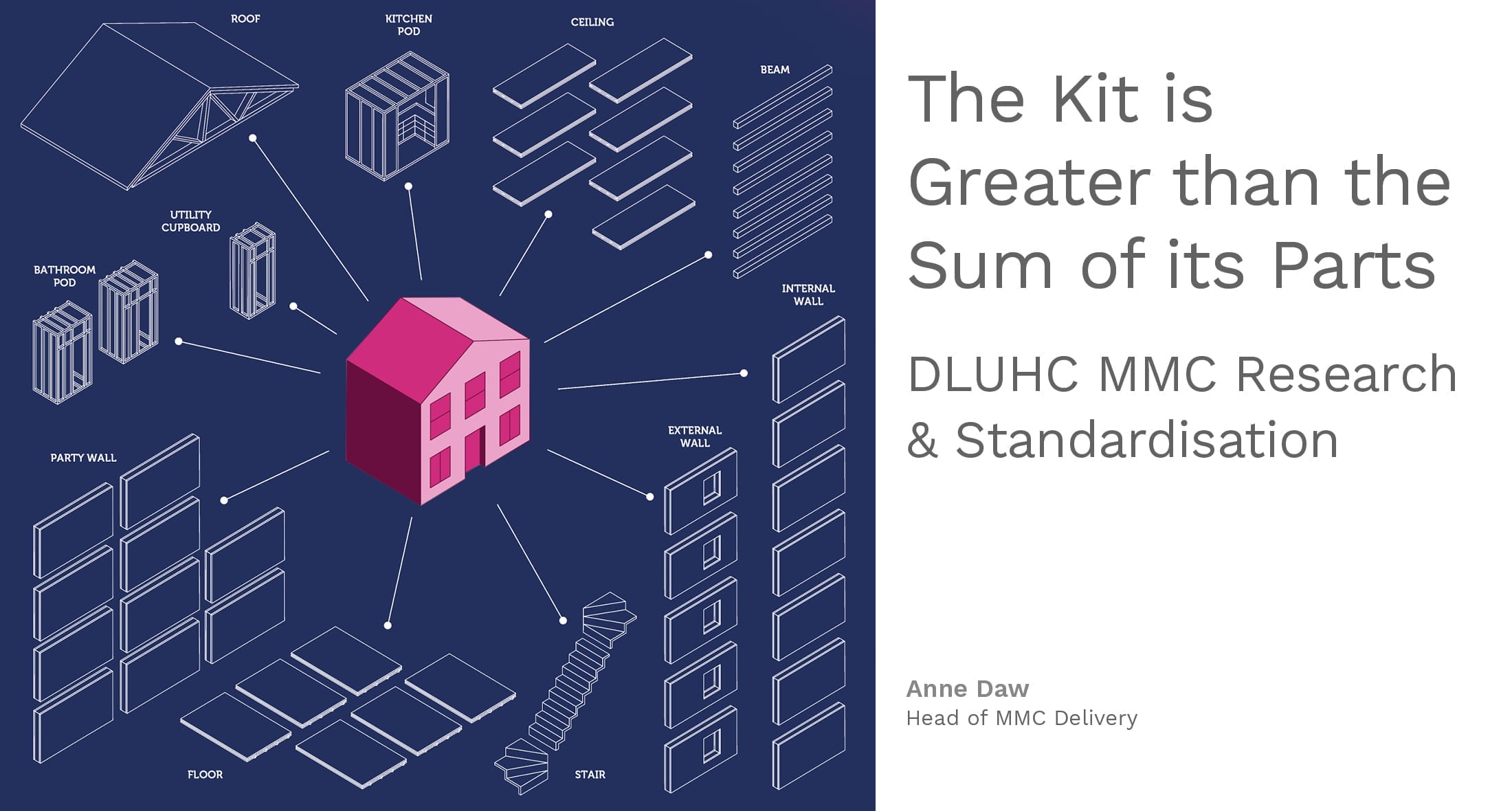
HLM Architects are the Research Lead on the Department for Levelling Up, Housing and Communities ‘MMC Standardisation Research and Kit of Parts’ project which seeks to bring cohesion to MMC in the housing sector.
This approach moves the industry away from siloed operations and toward a collaborative approach, ultimately improving pipeline consistency for MMC manufacturers and enabling more, high-performing homes to be built.
We’ve joined with partners from Akerlof, Buro Happold and Limberger Associates on this project which comprises two main components:
- to thoroughly appraise the current barriers to MMC through research and stakeholder engagement
- to identify standardisation opportunities within supply chain and digital environments, and develop an open-source digital kit-of-parts for the low-rise housing sector.
What is the research?
As Research Lead, our involvement has been far-reaching and varied, bringing together industry members from all areas, including:
- Policy makers
- Housing Providers
- Designers
- Insurers
- Assurance
- Manufacturers
- Material Supply Chain
All contributors feed into the research to inform our analysis of methods, materials, dimensions and practices to identify the best-value points of standardisation. We also reviewed previous research from the last 10 years to ensure we built on the industry’s existing body of knowledge with a broad understanding of the complexity of the ongoing industry transformation.
It is important to note that the ambition of our research is not to create any new restrictions or impose any new barriers for the industry. Rather, it is a compilation and further development of best practice to align demand with existing MMC supply chains. The aim is to ensure a baseline level of quality and performance, while standardising demand, enabling increased uptake of MMC across the housing sector. This approach moves the industry away from siloed operations and toward a collaborative approach, ultimately improving pipeline consistency for MMC manufacturers and enabling more, high-performing homes to be built.

As designers who have working relationships across the industry, and thorough experience of MMC across sectors, we are ideally placed to manage the collection and analysis of data from all stakeholders in the home building process.
Why HLM?
We understand how to maximise the benefits of MMC and understand the challenges and barriers to adoption. Our development of kit of parts standardisation in this research, as well as our other initiatives with industry leading contractors, has cemented our belief in the power of this approach to change the way we design and construct, resulting in buildings that are better for the environment, create better jobs, and result in better homes and workplaces for us all.
How will it be applied?
Our research and extensive analysis have identified points of standardisation and baseline performance requirements to inform the DLUHC digital kit of parts development. This standardisation will ensure quality by aligning with Future Homes Standards and requiring industry assurance and certifications, making it easier to approve and adopt MMC. It will also give designers information they need to make informed decisions, creating individualised homes that align with supply chain constraints and are suitable for multiple delivery partners. This will reduce supply chain risk and remove further barriers to uptake.
If the digital kit of parts is widely adopted, the alignment of design constraints and performance specifications will also enable manufacturers to streamline their production, improving quality, speeding manufacture, and reducing cost for everyone. The standardisation of the digital format and language included in the kit of parts tool goes that one step further by improving communication between all parties, making it easier to evaluate MMC systems and proving the qualitative benefits of offsite construction.
Our research and development of platform designs and digital kits of parts with industry partners will continue.
Where next? All aboard!
There is no doubt that these initiatives will help push the industry transformation forward. But this project, as a government initiative, has been unique in its potential to unite and standardise without being siloed in its methodology. There are significant benefits that can be captured if the industry rallies in support of this collective, standardised approach. It has the potential to galvanise the perception of high-quality construction with MMC delivery, while consolidating designer demand around sensible manufacturing constraints that will reduce complexity and cost. We owe it to ourselves to embrace this opportunity and take this collective, agnostic approach forward to create better more sustainable environments for us all to live and work in. That is thoughtful design in a nutshell.



